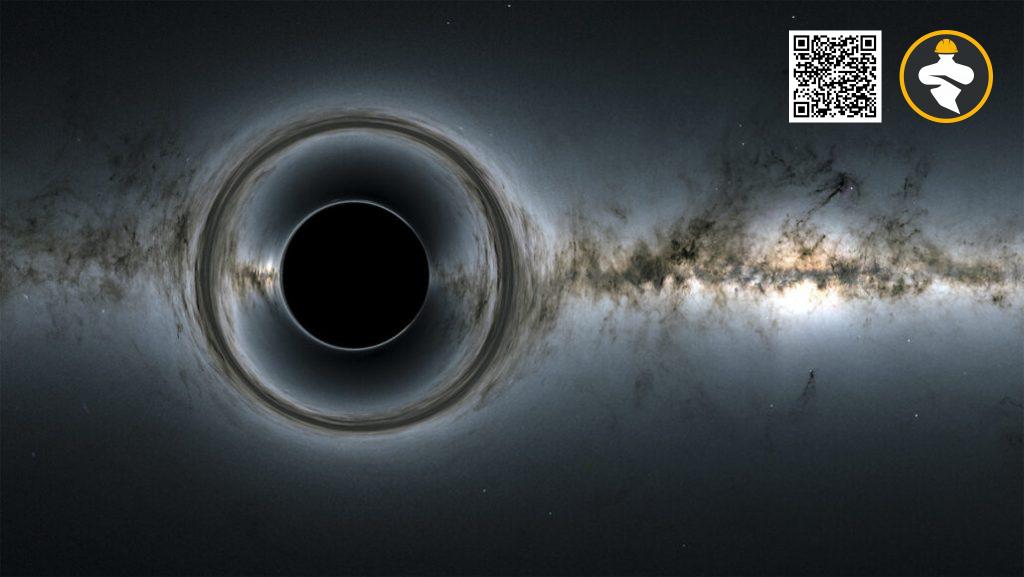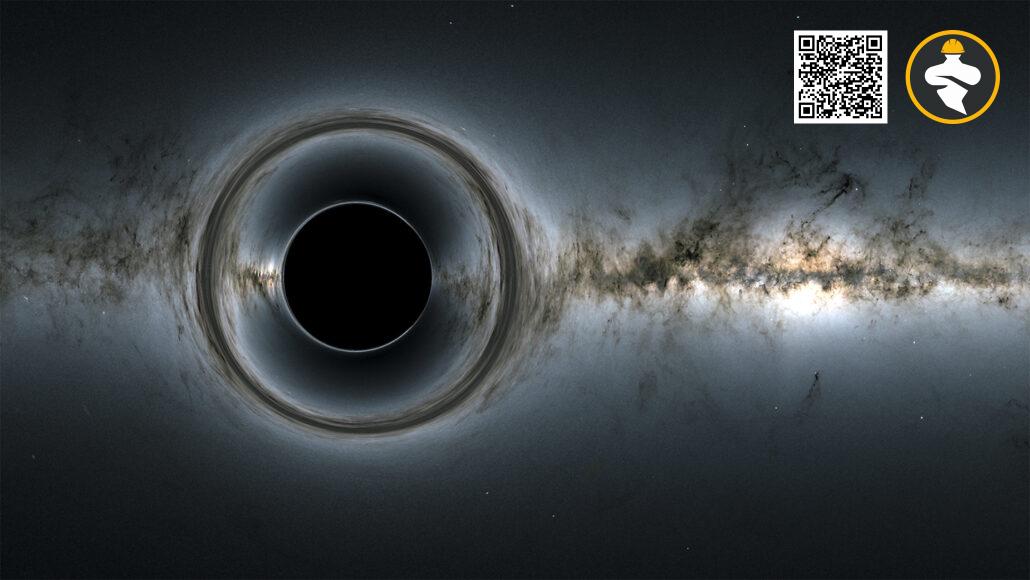Black holes are some of the most mysterious objects in the universe. These objects are so dense that their gravity is strong enough to prevent anything, including light, from escaping their gravitational pull. Supermassive black holes, which are millions or billions of times more massive than the Sun, are thought to reside at the centers of most galaxies, including our own Milky Way.

The idea that black holes can be ejected from galaxies is not new. It has been predicted by theory, but until now, there has been little evidence for it. The runaway black hole observed by astronomers is a significant discovery because it provides new insight into what happens when galaxies collide and merge.
According to the new study, the black hole was probably kicked out after two or three galaxies merged into one. When galaxies merge, their central black holes eventually merge as well. If the conditions are right, that merger can give the resulting black hole a “kick,” sending it flying away at high speed.
Another possibility is that the black hole could have been spat out of a smashup among three galaxies. When a third galaxy joins an ongoing merger, three supermassive black holes jockey for position. One black hole can be tossed out of the galactic smashup, while the other two take off more slowly in the other direction.
The runaway black hole appears to be leaving a trail of newborn stars and shocked gas in its wake. This is because black holes on their own are invisible. But when a black hole leaves a galaxy, it doesn’t leave by itself. Some of the stars and gas that were gravitationally bound to the black hole leave with it. That gas will emit strong radiation that telescopes can detect. The black hole’s path through the gas and dust in the galaxy’s outer regions can compress some of that gas into new stars, too, which would also be visible.
The discovery of the runaway black hole was made by astronomer Pieter van Dokkum and his colleagues while they were looking for colliding dwarf galaxies with the Hubble Space Telescope. They spotted a long, straight line that seemed to extend away from a distant galaxy, growing narrower and brighter as it went.
To figure out what it was, van Dokkum and his team took follow-up observations with the Keck Observatory in Hawaii. Those observations showed that the streak was associated with a galaxy whose light took about 8 billion years — more than half the age of the universe — to get to Earth.
The distance measurement let the team calculate the length of the line: roughly 200,000 light-years. That certainly ruled out a satellite.
“We considered a lot of explanations, and the one that fits the best is what we’re witnessing is a massive object, like a black hole, moving very rapidly away from the galaxy,” van Dokkum says.
Another possibility is that the line is a jet of radiation launched by the galaxy’s central supermassive black hole. But that scenario would probably lead to a beam that is narrow when it is close to the galaxy and broadens as it gets farther away. This streak does the opposite.
If it’s a black hole, it could have been ejected from the galaxy’s center by interacting with one or two other black holes nearby. Almost every galaxy has a supermassive black hole at its center.
The finding motivates researchers to search through archived data for more potential black hole streaks. “I wonder if there are more of these features out there, sitting in someone’s data that might have just been missed,” says Charlotte Angus, an astronomer at the University of Copenhagen who was not involved in the study.
Van Dokkum agrees. “If there are more to be found, I think we can do it.”
One interesting aspect of this discovery is that it provides evidence for a phenomenon that has been predicted by theory but has not been observed until now. According to the standard model of galaxy formation, galaxies grow by merging with one another. When two galaxies merge, their central supermassive black holes also merge, and if the merger is asymmetrical, with one black hole being significantly more massive than the other, the resulting black hole can receive a “kick” that sends it flying out of the galaxy at high speeds.
This process is thought to be responsible for the creation of “recoiling” black holes, which are black holes that have been ejected from their host galaxies. The idea is that as the black hole travels through the intergalactic medium, it drags a trail of gas and dust behind it, which can form stars as it compresses and heats up. This process can create a distinct “plume” or “tail” of star formation that can be observed by telescopes.
Until now, there has been little direct evidence for the existence of these recoiling black holes, and astronomers have had to rely on simulations and models to understand how they might behave. But this new observation provides strong support for the idea that these objects exist, and that they can be detected and studied using current telescopes. The hole was ejected as a result of a merger between two galaxies, or between three galaxies. The latter scenario is less common but can result in a more complex trajectory for the ejected black hole.
Reference: Lisa Grossman@sceincenews.org












Good post. I learn something totally new and challenging on blogs I stumbleupon on a daily basis. Its always useful to read content from other authors and practice something from their websites.